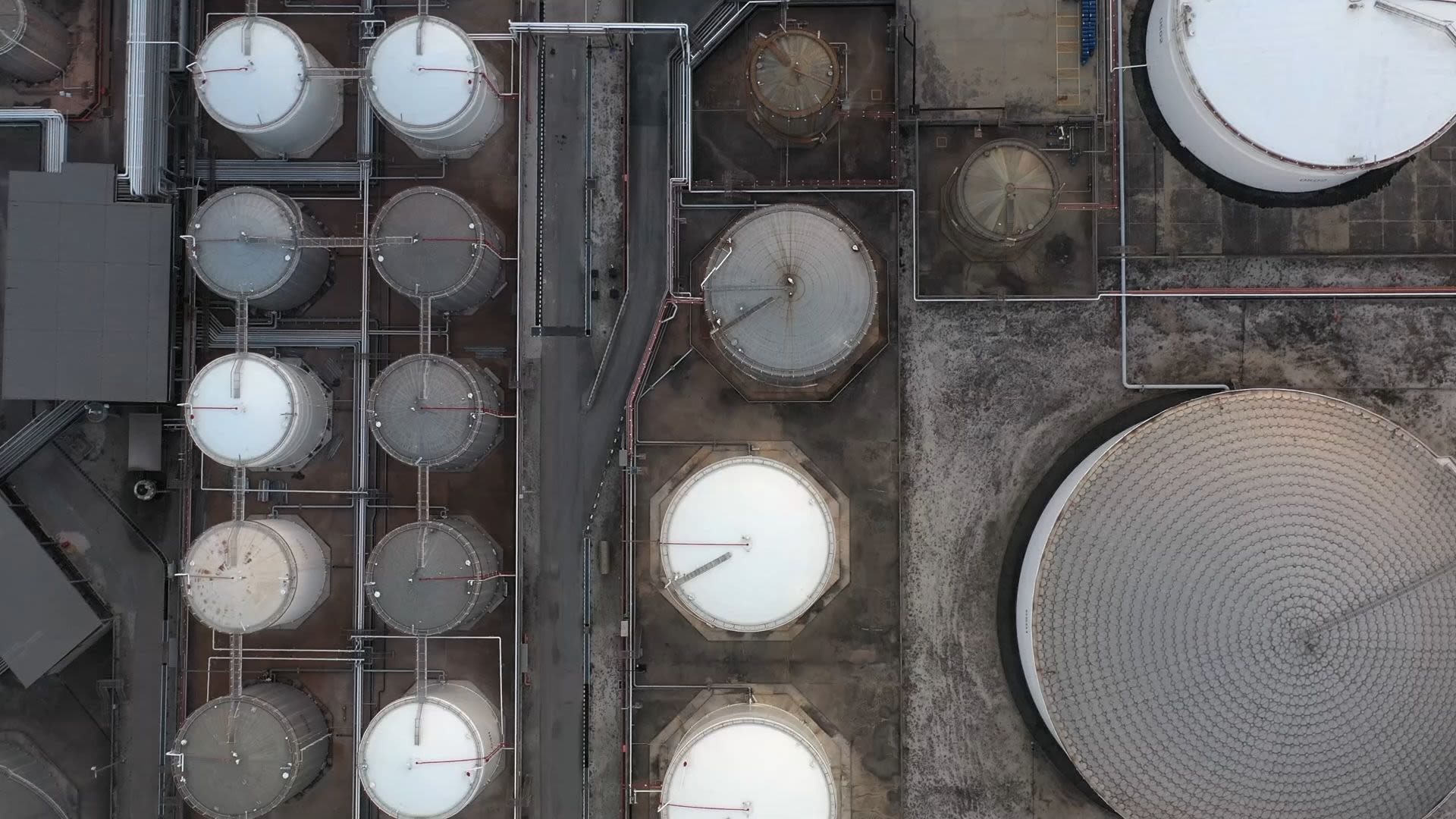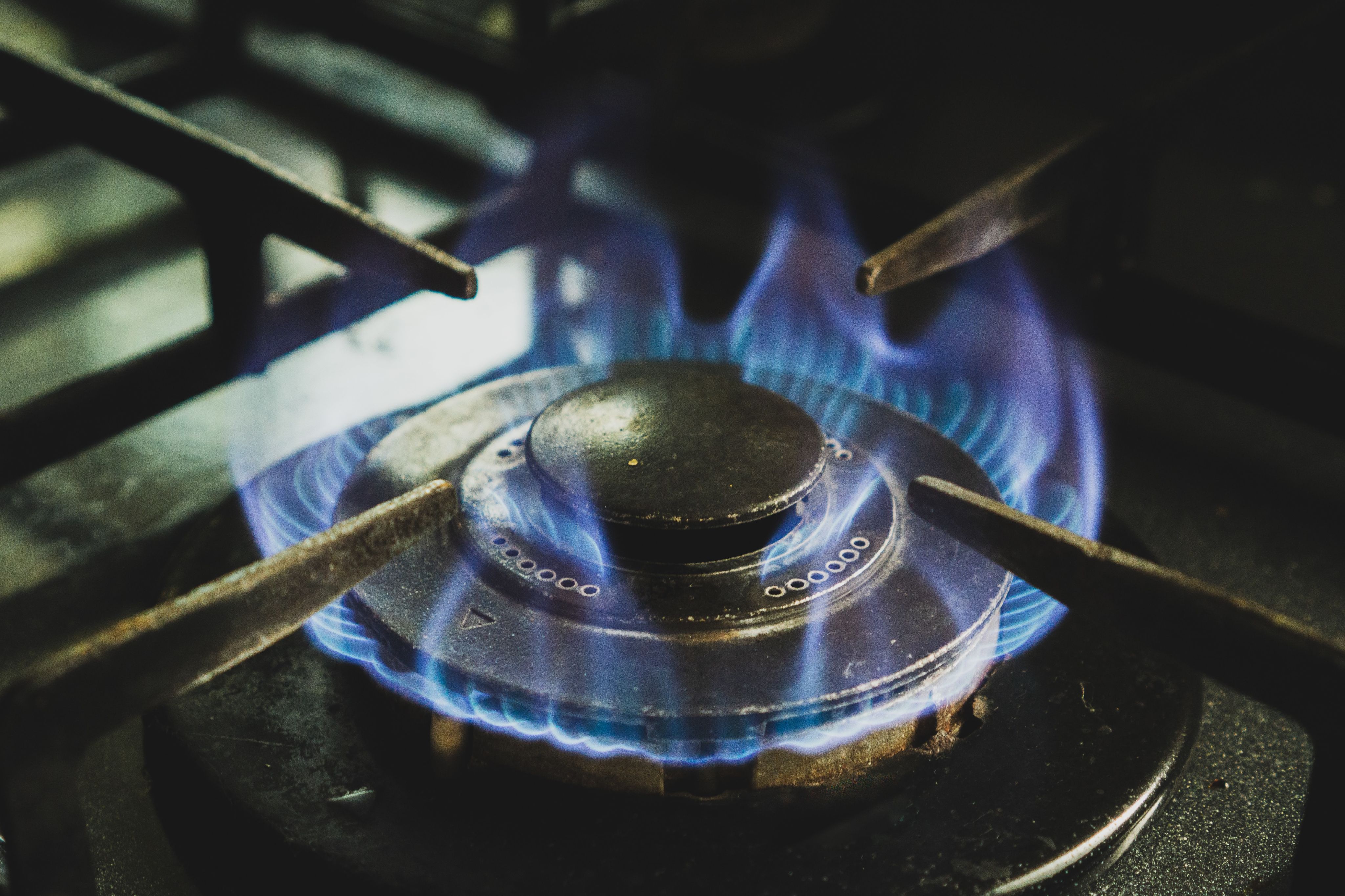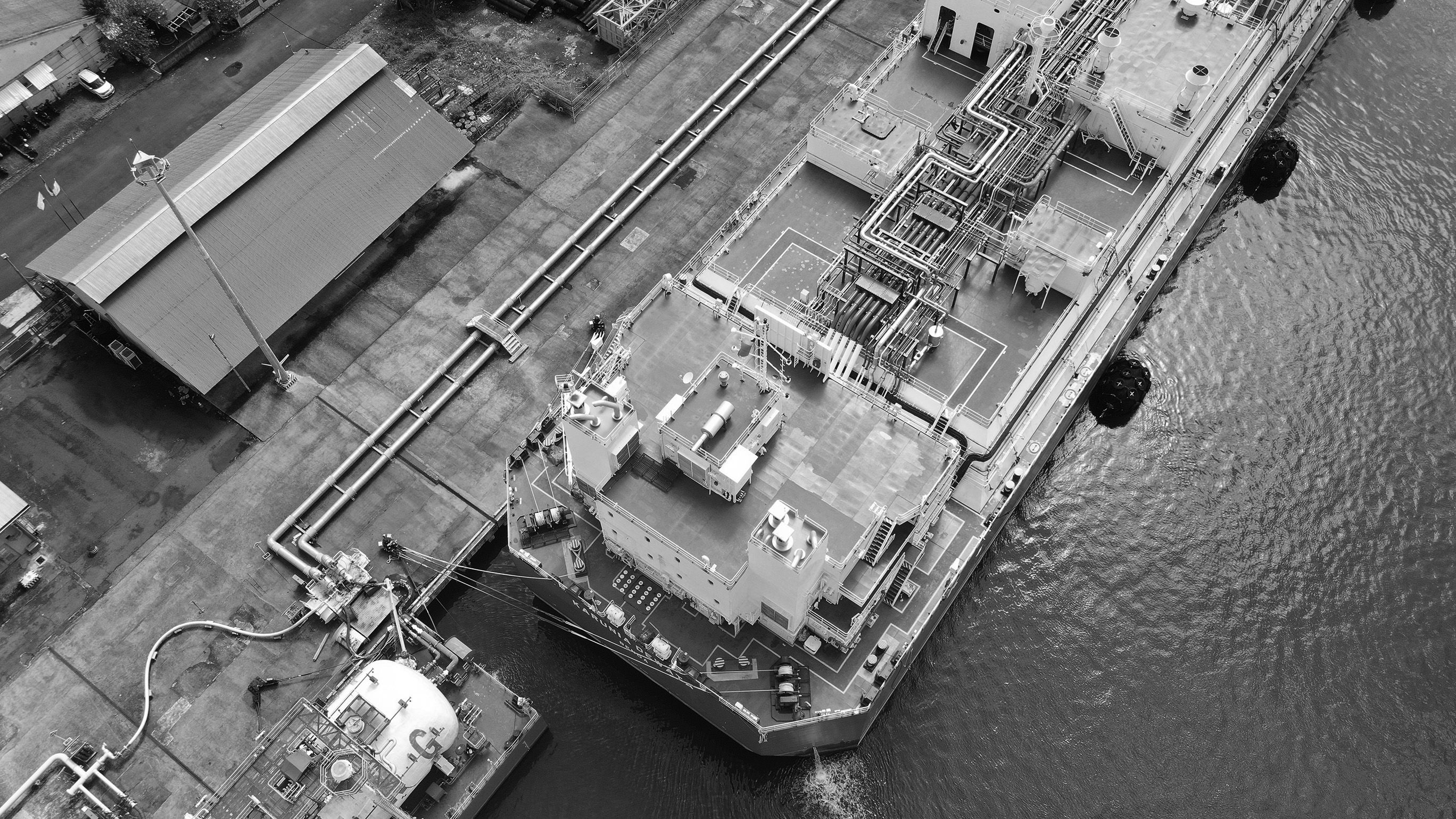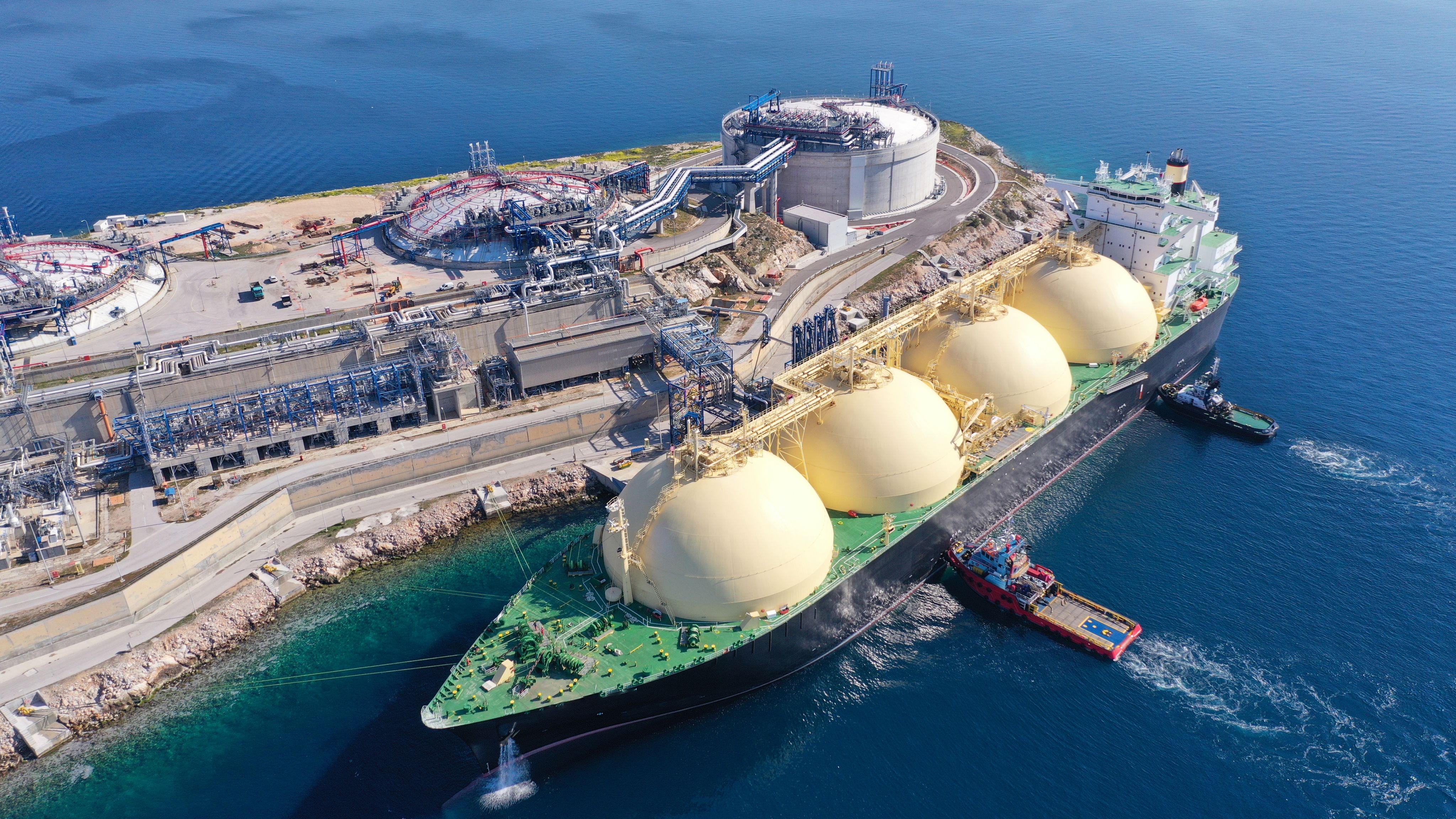How can Europe increase its access to gas?

With Europe rushing to end its dependence on Russian gas, attention is rapidly focussing on how supplies of replacement volumes can be delivered into Europe from other sources.
Once pipelines bringing Russian gas are eliminated from the equation, the options for increasing piped gas from other origins are very limited as expanding existing routes or the fields that feed them – from Norway, Algeria and Azerbaijan – would take many years to complete.
For this reason, LNG is seen as the best option for increasing supply in the short- to medium-term.
With the effects of Russia’s reduced supply having been a reality for many months now though, Europe’s existing LNG import infrastructure has found itself used at close to maximum rates. In the case of Spain and Portugal – as well as the UK in the early part of the summer – a lack of onward export infrastructure has also exposed frailties in Europe’s gas system that were ignored as unimportant when gas was more plentiful. This has focused attention on building new capacity.

Photo by KWON JUNHO on Unsplash
The search for ways to bring in more LNG has therefore been zeroing in on Floating Storage and Regasification Units (FSRUs), which have emerged in recent years as the quickest way to develop a gas import infrastructure.
The technology – which involves using a modified LNG tanker that is moored in or just outside of a port to receive, store and regasify LNG – is already well-established. Italy has long used one in addition to imports into its two fixed land-based import terminals, while in Croatia and Lithuania, FSRUs represent the only import route for LNG. New projects are also in advanced stages of planning in Cyprus and Greece.
Following Russia’s attack on Ukraine and subsequent European commitments to phase out Russian gas imports, mothballed projects are seeing the light of day again, too, as well as several brand-new projects that give off more than a whiff of panic.
In Germany, ambitious LNG import infrastructure plans that were originally shelved are being hastily revisited. On top of a land-based 8bcm/year import project at Brunsbuttel called German LNG, another, a previously-announced 8bcm/year FSRU-based project at Wilhelmshaven backed by Germany’s Uniper and Japan’s Mitsui OSK Lines (MOL), is also being looked at again.
A more embryonic 12bcm/year scheme near Hamburg called Stade LNG was also previously considered. Although the details have not yet been finalised, Germany’s two biggest energy companies, RWE and Uniper, have now signed up for two FSRUs each, which will likely be used across these projects. RWE’s deal, with Norway’s Hoegh, is thought to entail the 170,000cbm Hoegh Esperanza and 170,000cbm Hoegh Gannet, while Uniper has signed up for the year-old Dynagas FSRU 174,000cbm duo Transgas Force and Transgas Power.
In Italy, gas TSO Snam has bought the seven-year old Golar Tundra FSRU from Norway’s Golar LNG for $350m, and the similarly equipped FSRU BW Singapore from operator BW for $400m called when the current list price for a new FSRU is probably around $250m, although it is likely the deals include operational costs too. Together the two FSRUs should add an extra 5bcm each of natural gas import capacity once they are operational, from 2023 and 2024 respectively. Ravenna or Piombino are considered the most likely locations. Incumbent Eni is also thought to have signed a deal for another Golar FSRU. Snam has also bought a third, smaller FSRU – the 140,000cbm Golar Arctic – for installation in Sardinia.
An older, land-based project at Porto Empedocle in Sicily backed by electricity incumbent Enel is back under consideration, but would likely take several years to build. Snam's recently announced Sardinian project would be limited to meeting Sardinian demand only, due to the lack of a link to the mainland.
Meanwhile, a small but not irrelevant increase in throughput is already being seen at Italy’s oldest terminal, Panigaglia. The plant, which had been somewhat underused due to its inability to accept vessels above around 75,000cbm, has been receiving reloaded cargoes from Spain aboard Edison’s 30,000cbm specialist breakbulk tanker Ravenna Knutsen. Eni has also just repositioned its own 67,000cbm tanker LNG Portovenere to Europe and the vessel looks set to be used to shuttle to reloaded LNG from Spain’s Mediterranean ports to Panigaglia too.
Also quick to act was the Netherlands, where TSO Gasunie pounced to sign a five-year binding contract for the lease of a FSRU from US LNG company New Fortress Energy. This is expected to arrive in Eemshaven, in the Netherlands, this summer and is the second FSRU planned for Eemshaven in as many months, after a much smaller FSRU was chartered from Belgian shipping company Exmar at the end of April and is expected to arrive in Eemshaven this summer. Together the two FSRUs should be able to regasify 8bcm/year of LNG.
Importantly, they are also located close to some of the busiest gas routes in Europe, on the Dutch-German border. Once operational, the dual-FSRU terminal, which has a target start-up date of Q3 2022, will double Dutch LNG regasification capacity. Plans are also underway to enable more LNG to be regasified at the existing Gate LNG terminal in Rotterdam.
France, home to four land-based LNG terminals, is now looking at securing its first FSRU. A draft project for a floating LNG terminal in the port could potentially add 4.2bcm/year (around 3mtpa) by 2024, French gas system operator GRTgaz announced at the end of March.
In the Baltic, the 151,000cbm Exemplar FSRU, which was formerly in use as the FSRU at Bahia Blanca in Argentina, has been chartered out on a 10-year basis to serve both the Finnish and Estonian markets with a capacity of in excess of 2bcm/year.
However, there is currently uncertainty over whether the FSRU will initially start in Estonia – forming the Paldiski LNG terminal, before later transferring to Finland – or whether it will sidestep Estonia altogether to be located at the Finnish site of a previously planned LNG terminal from day one.
In neighbouring Latvia, private developer Skulte is being considered for an FSRU at the port of the same name, but has no physical assets or financing backing at present.
Poland, which is already home to the Swinoujscie LNG import terminal, is considering installing an FSRU at Gdansk.
More developed projects include FSRUs at Vassilikos in Cyprus, due to enter operation this year, and another at Alexandroupolis in Greece due online next year. Albania could also get an FSRU.
Typically, interest in FSRUs is a lagging indicator to low global prices – that is to say interest is usually at its highest after a period when, globally, LNG is perceived as being cheap. The fact that Europe is looking to develop further FSRUs now is unusually counter-cyclical, since high prices usually tamp down demand. In theory, therefore, it could reduce interest from some of the markets that have been looking at developing new FSRU infrastructure beyond Europe.
Indeed, given current high pricing and an outlook that does not look to promise a drop in LNG pricing for at least a couple of years, it remains to be seen whether projects scheduled in markets like Brazil, Panama, Nicaragua and Sri Lanka that are already in development will become unviable. Indian energy company H Energy’s project at Jaigarh, which was to use the Hoegh Giant, looks to be the first victim of the new extreme competition for FSRUs.
FSRUs cannot fill the Russian pipeline gap…
However, with a typical FSRU being able to bring in perhaps 4-6 million tonnes per annum (mtpa) of LNG – equal to about 5-8 billion cubic metres (bcm) of natural gas a year – Europe would likely need multiple FSRUs to fully backfill missing Russian pipeline gas – without even factoring in new sources of supply.
A global slowdown in the scale of development of new LNG liquefaction projects means that even taking into account all the new projects coming on stream this year and next, supply will likely be very tight.

…but they could potentially help mitigate the effects
All projects are different, but if delays are kept to a minimum, new FSRU projects that are backed quickly as Europe flees its dependence on Russian gas could be up and running within a couple of years, based on previous FSRU project completion times. Alongside the leasing or acquisition of a vessel equipped with regasification technology, FSRUs require a permanent jetty and pipelines connected to the grid.
Given how much gas needs to be replaced, especially in markets like Germany, large FSRU vessels are needed. The latest generation of LNG tankers tend to be around the 170,000cbm of capacity mark, representing around 4mtpa of potential LNG imports, equal to around 5-6bcm of natural gas. This is what has been happening, where available, as if replacing Russian gas volumes is the aim, older FSRUs, such as the outgoing Jamaican FSRU, Golar Freeze, would likely be too small at around 2.4mtpa.

Any country seeking an FSRU would then have to decide whether to commission a brand-new vessel – incurring a wait time of probably three to four years, based on current lead times: new build LNG vessels are currently being offered with delivery times into 2025 and beyond.
Last year, one vessel owner changed down the specification of an FSRU it had ordered to be just an LNG carrier (LNGC) though, so in theory a vessel on order could potentially be upgraded to FSRU spec, if the money is there and the vessel is speculative.
The quickest option would therefore be to charter an existing vessel, if charter availability permits. There were around 45 vessels capable of being used in this capacity, with about half already employed as FSRUs.
A handful more are already tied down and will soon start operations as new FSRUs, while a couple are more specifically FSUs – meaning they just store the LNG, with the regasification done on shore.
In March, ICIS calculated that there were about a dozen FSRUs currently trading simply as LNGCs, which would represent the quickest option. Since then however, the decks have been virtually cleared. With four signed up by Germany and the same again booked across Italy, France and the Baltics, all of the most modern vessels have found homes, with the few that are left less suitable.
The race for available FSRUs was intense but short-lived. Any new units will likely either have to be wrested from global operators with less deep pockets, or importers will need to wait for new builds to enter the market.
About the author

Rob is an LNG market analyst at ICIS, with a particular focus on updating and maintaining data integrity on the LNG Edge vessel-tracking platform. His principal responsibilities involve tracking and updating contracts, outages and voyages and integrating newbuild vessels into a global fleet that now stands at around 650 vessels. He also maintains a close eye on the developing LNG-as-a-fuel sector, both in the LNG bunker market and the trucked-LNG sector, and has been involved with ICIS’s outreach with other companies operating in this space.
As your trusted integrated energy partner, ICIS helps you identify new opportunities, analyse risks and secure margins.
Through our daily and weekly pricing and news reports, analytics platform, and supply-demand forecast products, ICIS LNG service provides data-driven insight and expert analysis, giving you a complete perspective of historic, current and future market conditions.
Related content
Speak with ICIS
If you would like to find out more about how we can work together to bring you actionable insight to support quality decisions, get in touch with us today. Fill in your details, submit the form and a member of our team will contact you.


